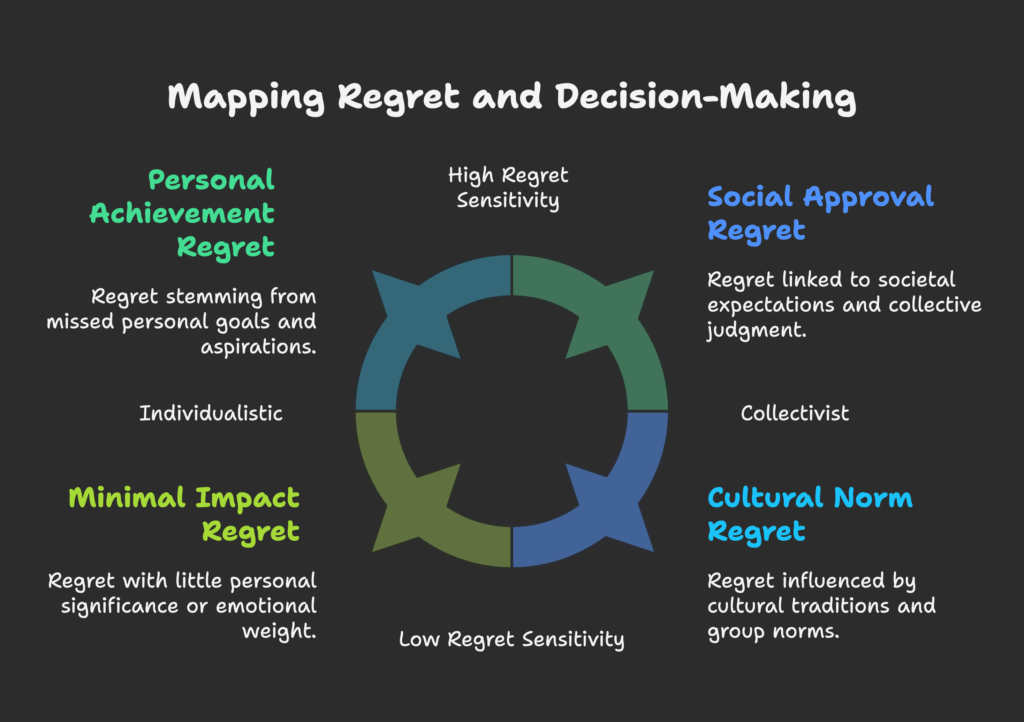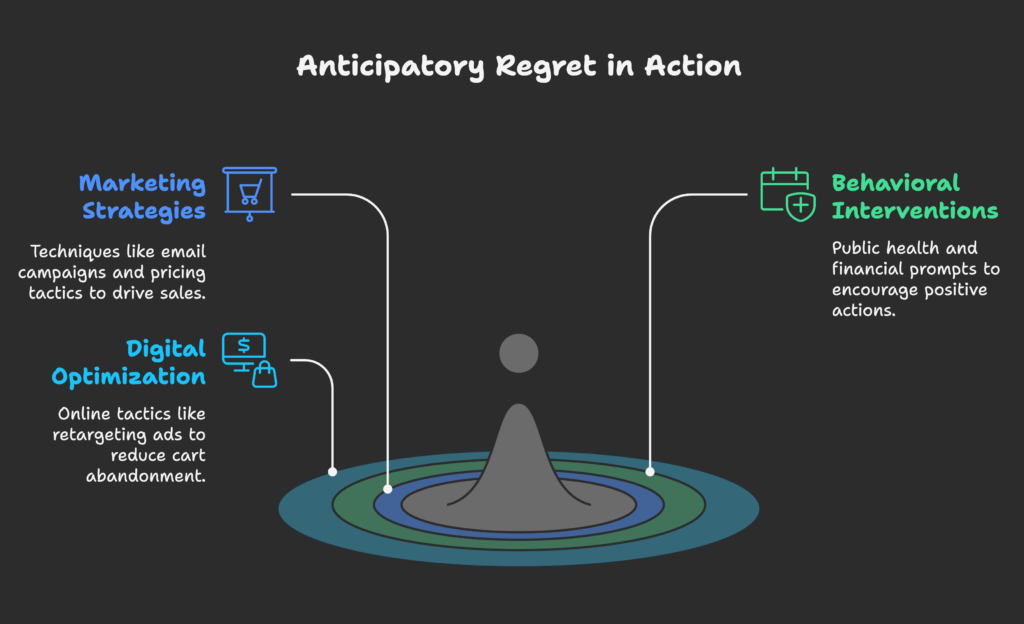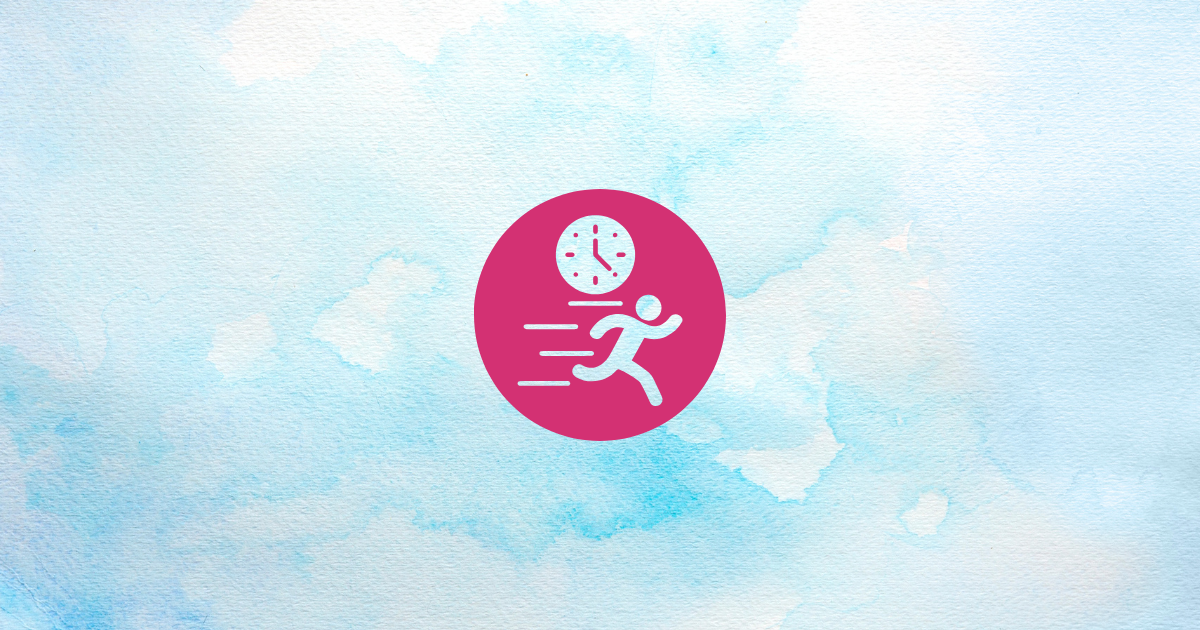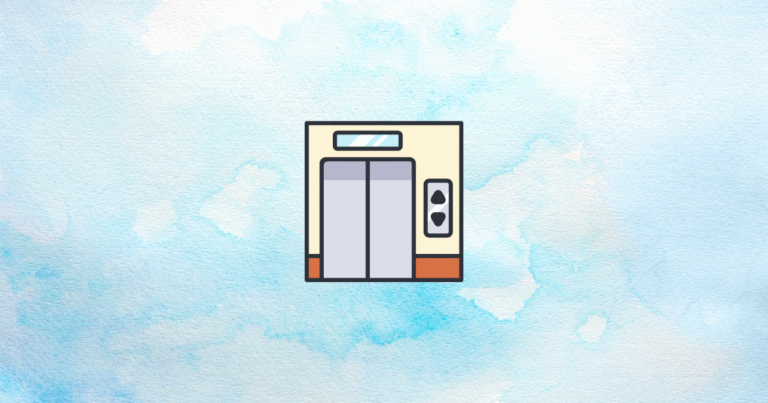Have you ever skipped a big sale and then felt an instant wave of “If only I had bought it” regret? That fear of future remorse – known as *anticipatory regret* – often drives us to take action now, rather than risk missing out. By reading this article, you’ll discover how marketers harness this powerful emotion to prompt immediate purchases, sign-ups, or behavior changes. Ready to see how the thought of future regret can lead to sales *today*? Let’s begin!
In this section: We’ll define anticipatory regret, trace its psychological basis, and see how it shapes real-world business strategies. You’ll learn why simply reminding someone they might *later* regret not acting can spark immediate conversions, whether in e-commerce, health campaigns, or other domains.
Conceptual Framework
Anticipatory regret is the *pre-decisional avoidance* of future remorse. Essentially, people imagine a future scenario where they regret *not* doing something now – for instance, missing out on a limited discount or failing to adopt a health habit. This concept first emerged from regret management theory, evolving into a mainstream marketing tool. From a business perspective, immediate actions spurred by regret-driven urgency can boost conversion rates and overall revenue. The effect is so strong, economists see it as a key factor in shaping decisions about spending, saving, or investing.
Psychological Basis
Neuroscience points to *amygdala* activation when people anticipate negative outcomes. Meanwhile, the *prefrontal cortex* weighs possible futures: “If I don’t do this, how bad will I feel?” People dread blaming themselves later, which triggers them to say, “I’d better buy/book/act now.” This process ties into *dual-system theory* (the quick, emotional part of our brain pushing us to avoid negative feelings, and the reflective part confirming it’s a wise move). At its core, regret aversion drives individuals to make safer choices or immediate decisions to dodge emotional pain.
Strategic Relevance
Marketers use anticipatory regret through messages like “Hurry, last day to save!” or “Don’t miss out on the only chance this year!” They tap into *FOMO* (fear of missing out), ensuring customers picture how disappointed they’d be tomorrow if they let the opportunity pass. It’s an effective technique—**but** must be balanced with transparency. Overusing regret as a tactic can backfire and hurt trust if it feels manipulative. Carefully used, it’s a powerful persuasion method that can lead to big gains in conversions and engagement.
So, that’s your introduction. Let’s take a closer look at the science behind it—how the brain interprets risk, triggers emotional responses, and influences different personalities or age groups.
Psychological Foundations of Anticipatory Regret
In this section: We’ll zoom in on the neurological underpinnings (like the amygdala and dopamine pathways), explore the main emotions fueling regret, and see why some people or contexts amplify the effect more than others.

Neurobiological Mechanisms
When we foresee a missed opportunity—say, not buying a plane ticket before it sells out—our *orbital prefrontal cortex* and *amygdala* simulate that future disappointment. The *dopamine system* tracks reward prediction errors, so if we sense a big potential gain might slip away, our brains register a negative signal. This can be enough to push us towards immediate action. Additionally, *counterfactual thinking* (imagining alternate realities) intensifies the emotional punch of a “what if?” scenario, boosting the sense of regret we want to avoid.
Cognitive and Emotional Drivers
- Loss Aversion: People hate losing out more than they like equivalent gains. Missed deals or last seats evoke strong negative feelings.
- Self-Blame Mechanisms: We fear blaming ourselves for not acting sooner. This personal responsibility spurs us to say “Yes, I’ll do it now.”
- Temporal Framing: The closer or more “real” the outcome feels, the greater the mental weight. If a sale ends in 2 hours, regret is sharper than if it ends in 2 weeks.
Individual Differences
Not everyone reacts the same. *Maximizers*, who strive for the absolute best deal, are more prone to regret. They dwell on what could have been if they chose differently. Meanwhile, risk-averse folks also prefer to avoid the agony of missed chances. Cultural contexts matter too: collectivist societies might tie regrets to social approval, whereas individualistic cultures tie regrets to personal gains or losses. And certain life stages, like adolescence, can intensify impulsive decisions out of regret avoidance.
We’ve covered the mental processes. Let’s move on to how marketers and behavior-change professionals harness this fear of future regret to encourage immediate steps—whether buying, signing up, or adopting a new habit.
Applications in Marketing and Behavior Change
In this section: We’ll detail how both commercial and non-commercial efforts use anticipatory regret to nudge decisions, from urgent e-commerce promos to health campaigns reminding people how they might regret ignoring a check-up.

Marketing Strategies
- Email Campaigns: Subject lines like “Don’t regret missing this deal!” or “Last chance to lock in your discount” push readers to open and convert.
- Social Proof: Show how many others have already taken advantage. Potential buyers might fear they’ll regret if they remain out of the loop.
- Pricing Tactics: Demonstrate how the price will soon rise, or how a discount is *just for today*. This visualizes a stark “now or never” scenario.
Behavioral Interventions
*Public health campaigns* might say, “Don’t let yourself regret not getting the flu shot.” Similarly, financial apps warn, “You’ll wish you’d started saving sooner.” By painting a vivid negative outcome of inaction, these campaigns motivate positive steps. The key is pairing regret with a clear, simple action—like signing up for the shot or opening a savings account—to reduce friction once the emotional impetus is sparked.
Digital Optimization
– Retargeting ads: “We noticed you left these items in your cart—imagine the regret if someone else gets them first!”
– Progress indicators: Display partial completion with a small message: “Only 1 more step—don’t abandon now, you’d hate to miss out!”
– Scarcity messaging: “Only 2 seats left at this price—secure yours before they’re gone!”
All these revolve around that emotional impulse to avoid future annoyance at ourselves for not acting quickly.
To deploy these ideas effectively, you need a robust approach to crafting the messages and experiences. Next, let’s walk through the frameworks for implementing regret triggers while safeguarding user goodwill.
Implementation Frameworks
In this section: We’ll guide you on designing messaging that stirs regret responsibly, applying behavioral nudges that reduce friction, and establishing ethical boundaries so you don’t overstep.
Message Design
- Fear vs. Hope Balance: Overwhelming fear can paralyze, but a moderate sense of “you’ll feel bad if you miss this” combined with hopeful reassurance works best.
- Comparative Scenarios: Show “What if” outcomes: “If you claim the offer, you gain these benefits; if not, you’ll miss them.” Simple stories or testimonies help.
- Social Validation: Weave in quotes from customers who previously missed such opportunities and later regretted it—but found relief when they finally took action.
Behavioral Nudges
- Default Settings: e.g., a pre-checked subscription box with a note about future regret if you uncheck it. (Use ethically, be transparent.)
- Feedback Loops: Confirm a user’s wise choice. After they act, a short message like “Great decision—you’ve just avoided missing out!” cements positivity.
- Gamification: Small rewards or trophies for immediate engagement. This fosters a sense that failing to act *now* means missing out on achievements.
Ethical Guardrails
While nudging is helpful, tricking or overly pressuring users can erode trust. Reveal *real deadlines*, not fake ones. Provide genuine ways out if they change their minds. If your brand is about building a long-term bond, a user who feels manipulated will not stay loyal. Strive for *mutual benefit*: they avoid regret, and you get a satisfied customer.
All set to measure success? Next, we’ll detail how to track improvements in conversions and user feedback after implementing these regret-based tactics.
Measuring Effectiveness
In this section: We’ll explain which KPIs matter most (like conversion rate lifts), how to gather qualitative insights (like user interviews), and how to test different regret angles for optimal results.
Quantitative Metrics
- Conversion Rate: The most direct measure. Compare pre- and post-implementation of regret cues in your marketing.
- Abandonment Recovery: Look at cart or form abandonment rates. If regret-oriented prompts reduce these, you’re on the right track.
- Long-Term Retention: Track if newly converted customers remain active or if they feel buyer’s remorse and churn quickly.
Qualitative Insights
Interview a small batch of users or send out short surveys about what persuaded them to act. Often, “I didn’t want to lose the deal” or “I felt I’d regret not taking this chance” signals your regret triggers are working. Heatmaps can also show where eyes linger—maybe on “Limited-time” or “Last chance” text—confirming the emotional punch. A/B testing different regret-framed taglines further clarifies what hits hardest.
A/B Testing
- Different Regret Intensities: See if strong “Don’t risk regretting this” wording outperforms a softer “Why wait until it’s gone?” angle.
- Message Timing: Is regret best invoked at the start or near checkout? Possibly test an early reminder vs. an exit-intent pop-up referencing regret.
Refine and iterate. Each micro-boost in conversions can yield significant revenue over time, especially for high-traffic sites or big email lists.
Now, let’s explore success stories across industries—everything from e-commerce to health campaigns that rely on the dread of future regret to spark immediate action.
Case Studies of Success
In this section: We’ll highlight how e-commerce, health, and finance sectors deploy anticipatory regret effectively, turning the potential sadness of missing out into real-time conversions.
E-commerce Campaigns
- Flash Sales: Amazon’s “Lightning Deals” emphasize the regret of letting an item run out. This can double or triple sales in short windows.
- Abandoned Cart Reminders: Emails that say, “Don’t regret losing these items—still want them?” recover a significant portion of lost sales.
- Social Commerce: Limited-edition influencer product drops, with strong messaging about how fans will feel left out if they don’t buy now, often sell out in hours.
Health Behavior Interventions
- Vaccination Drives: Campaigns that highlight the regret of catching the flu without immunization can push more sign-ups for free clinics.
- Smoking Cessation Ads: Evoking future regret over health declines or family sadness can mobilize smokers to seek immediate help or medication.
In both examples, it’s essential to show a clear solution: “Book your appointment now” or “Order nicotine patches and join a support group.” This channeling of regret is a powerful motivational lever, but clarity matters.
Financial Services
For financial products:
- Savings Campaigns: “Open your high-yield account now—future you will thank you. Don’t regret missing out on interest.”
- Insurance Ads: “Do you want to live with the regret of not protecting your family? Act now to lock in coverage.”
By illustrating the negative outcome of inaction (e.g., debt, insufficient coverage), these messages prompt quick sign-ups, bridging the gap between “I should do that eventually” and “I’ll do it right now.”
Finally, we’ll consider possible misuses, discuss emerging trends like AI-driven regret triggers, and outline how to approach these methods responsibly for a better future.
Ethical and Future Challenges
In this section: We’ll weigh the risks of manipulative marketing that only focuses on scaring or guilting people, plus see how advanced tech might refine this tactic or intensify controversies. The future holds both promise and pitfalls.
Manipulation Risks
Overdoing regret appeals can lead to constant pressure on customers, draining them emotionally and potentially harming brand reputation. Creating false scarcity or illusions of urgency is deceptive. If discovered, it breaks trust. Also, individuals with anxiety or mental health vulnerabilities could be more traumatized than motivated by intense regret messaging. Responsible marketers tailor intensity to keep it helpful, not exploitative.
Emerging Trends
- AI-Driven Personalization: Tools that read user behavior, adjusting the regret-based triggers to match personal preferences. For instance, noticing repeated cart abandons and serving tailored “You’ll miss this if you go” ads with the user’s name or items pictured prominently.
- Neurofeedback Integration: In advanced marketing labs, measuring real-time stress or regret signals might refine exactly when to show an urgent offer. The ethics of such close user monitoring remain under debate.
- Cross-Cultural Adaptations: Some cultures respond better to group or community-based regret (like letting your family down), while others respond to personal regrets of missing personal goals. Localizing your approach can yield higher success rates globally.
Implementation Roadmap
In this section: We’ll present a structured plan to adopt regret-based marketing, from initial audits to final optimizations, ensuring your brand remains credible and effective.
Pre-Campaign Audit
- Identify Pain Points: Which regrets do your customers typically mention? Missed discounts? Delayed sign-ups?
- Competitor Review: See how others use urgency or regret themes—aim to do it more ethically and more effectively.
This helps spot where you can insert regret messaging without going overboard.
Campaign Design
- Message Architecture: Build narratives that highlight the *future self’s dissatisfaction* if the user doesn’t act. Also, ensure a hopeful resolution if they do act.
- Channel Selection: Some mediums (like email or push notifications) are better for last-minute regret triggers, while website banners or social ads can create consistent gentle reminders.
Make sure each platform’s content matches user expectations. A forcibly urgent tone on social might annoy, but a well-timed email can gently push them to finalize their cart.
Post-Launch Optimization
- Iterative Testing: Tweak emotional intensity or timing based on conversion data and user feedback.
- Consumer Sentiment Checks: Ensure your brand’s image remains positive, not manipulative. Are reviews complaining about “too many scare tactics” or “fake urgency”?
Refine your approach, focusing on messaging that resonates without crossing the line. Over time, you’ll find the sweet spot that fosters trust and immediate engagement.
Small Note: If you’re a Shopify merchant eager to harness anticipatory regret effectively (and ethically), check out the Growth Suite app. It helps you craft regret-based prompts, track performance, and refine your strategy—turning potential “if only I had” moments into fast, confident checkouts.
References
- Anticipated Regret and Health Behavior (PMC, 2016). Link
- Regulatory Focus and Anticipated Regret (Semantic Scholar, 2020). Link
- Anticipated Regret in Marketing (Oxford Research Encyclopedia, 2017). Link
- Building Anticipation in Marketing (Landingi, 2025). Link
- Self-Control Regret in Consumer Behavior (Semantic Scholar, 2021). Link
- Regret Aversion in Decision Making (The Decision Lab, 2021). Link
- Anticipatory Regret in Sales (LinkedIn, 2019). Link
- Anticipated Regret and Feedback (Wiley Online Library, 1999). Link
- Regret in Marketing (We Create Digital, 2024). Link
- Global vs. Local Brand Preference (SAGE Journals, 2020). Link
- Online Impulsive Buying (PMC, 2021). Link
- Regret in Decision Theory (Wikipedia, 2008). Link
- Post-COVID Travel Motivation (Semantic Scholar, 2022). Link
- Regret Aversion (The Decision Lab, 2021). Link
- Emotion Regulation and Regret (PubMed, 2024). Link
- Travel Marketing Post-Pandemic (Semantic Scholar, 2022). Link
- Regret Management in Banking (Semantic Scholar, 2013). Link
- Regret in Decision Theory (Wikipedia, 2008). Link




